Revisiting Tide Change, False Creek Workshops
From January – April 2022, Place-Based Field School contributors explored responsibility, reciprocity and commitments to land and non-human life with neighbours and organizations from Emily Carr’s community.
Collaborators included Indigenous artists and ethno-botanists; community organizers, activists and social workers; gardeners and waste remediators; advocates for cultural labour; and artists engaged with land and material.
One of the highlights of activities was the week-long ‘Tide Change, False Creek’ programming with artist Lou Sheppard, whose permanent work of the same title will be installed at the GNW-Emily Carr Skytrain station when it opens to the public in 2025. Lou’s site-specific work will be an homage to the historic False Creek Flats, the 450 hectares of wetlands that were once a significant ecological feature and an important area for the Coast Salish communities living on this land.
The ‘Tide Change, False Creek’ programming explored the distinct qualities of the tidal flats and its indeterminate spaces between high and low tide through ecological, economic and social lenses.
The week began with ‘Tide Walk’, a participatory performance in which the artist and participants traced the historic movement of water in and out of the tidal flats moving at the speed of the tide, which covered approximately 5km in about 4 hours, moving from Science World to Clark Drive and back.
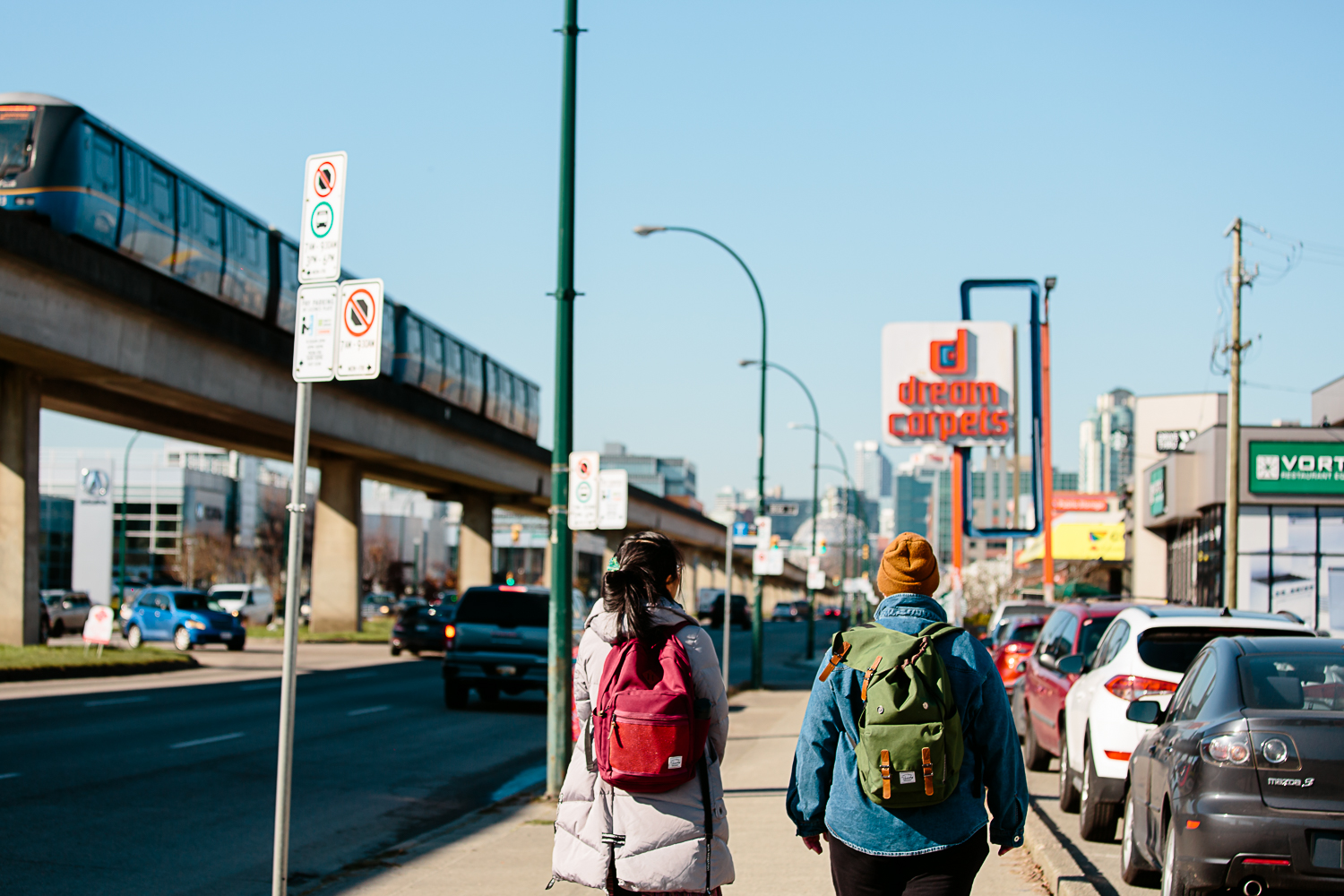
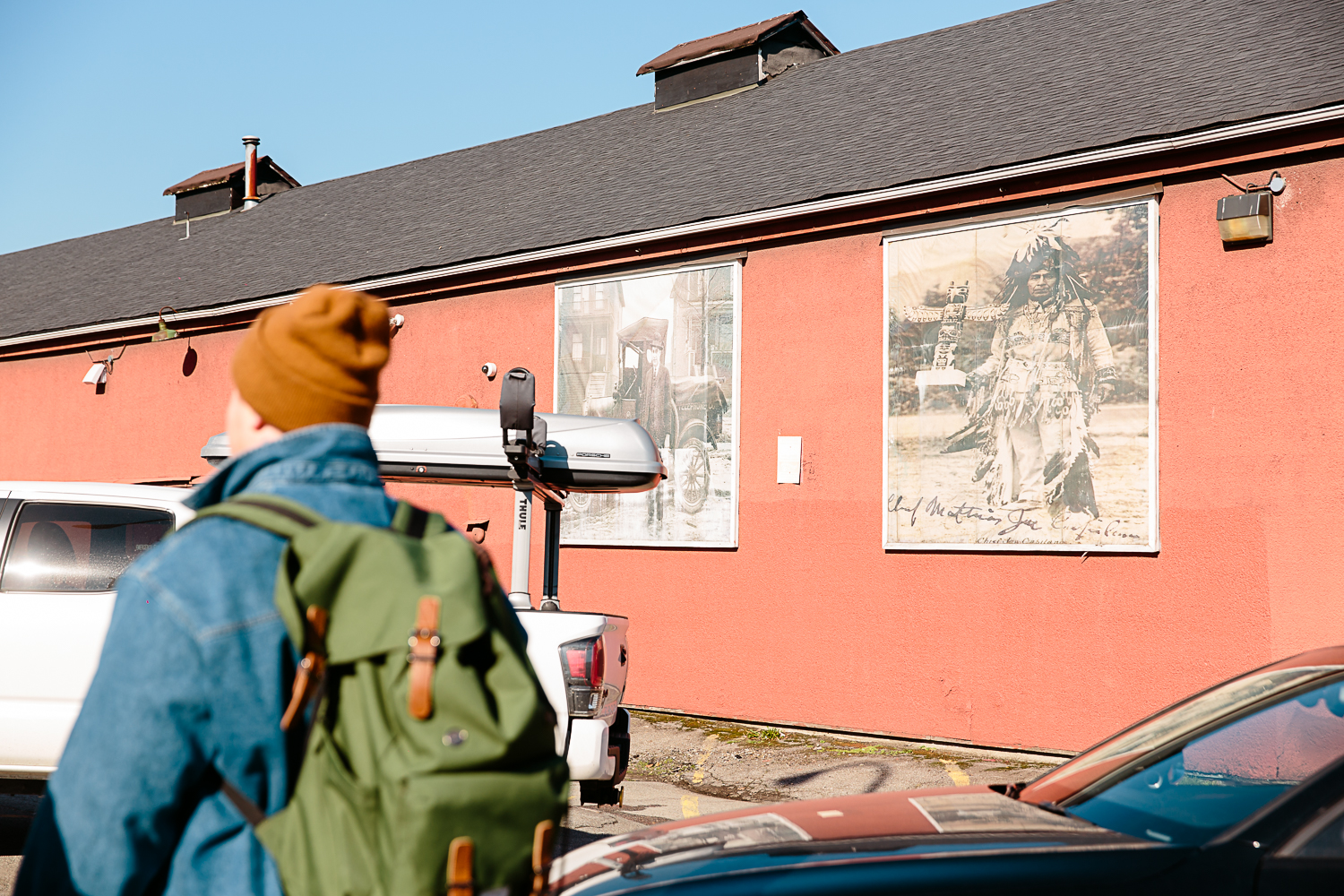
Image (top): Xinwei Che (left) with Lou Sheppard (right) on the ‘Tide Change’ walk in False Creek on February 25
Image (bottom): Lou Sheppard in movement by Vancouver Flea Market
All images courtesy Alison Boulier
This was followed by ‘Watering Cracks’ workshop, led by Xinwei Che (MFA 2022) which saw the artist and participants trace the cracks and fissures on the embankments and pavements at the creek’s edge with water gathered from False Creek.
Reflecting on this group gesture Xinwei notes, “water, alongside other forces of nature, weathers cracks into the skin of concrete and asphalt we have built on the soft earth below. The edge of False Creek, which was once a shifting intertidal zone of cyclical movements, is now largely delineated by the hard line of Vancouver’s urban waterfront.”
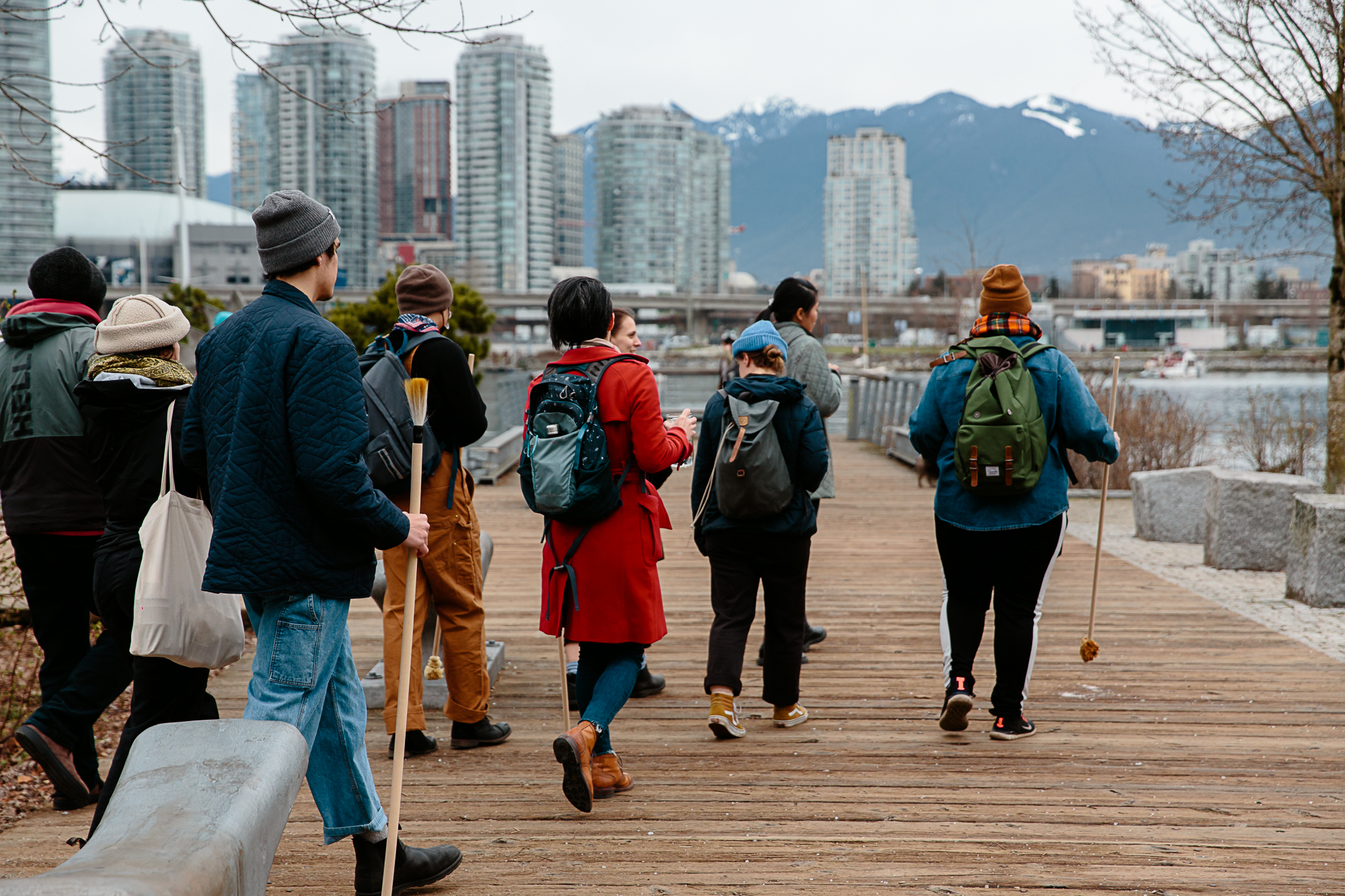
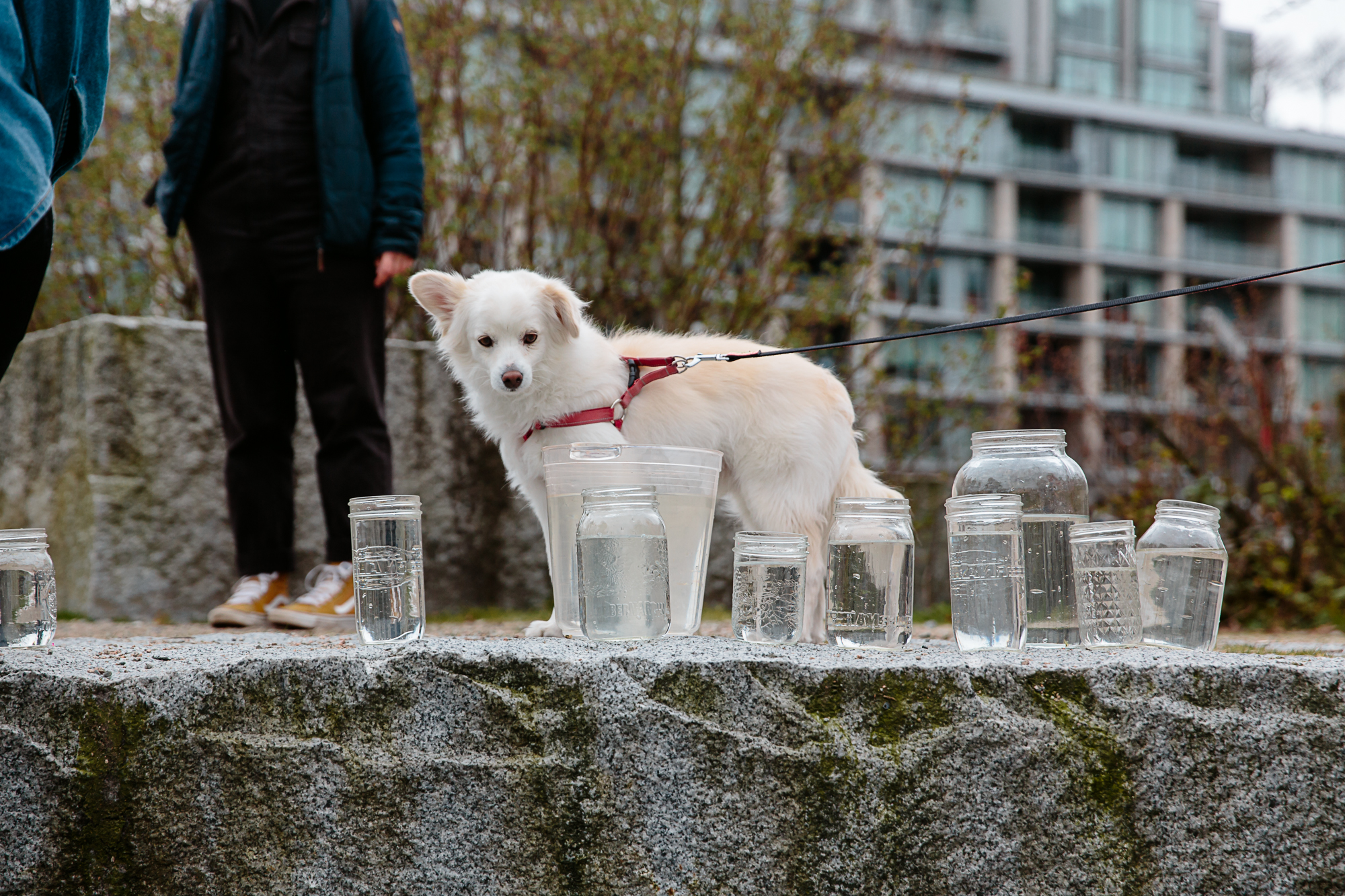
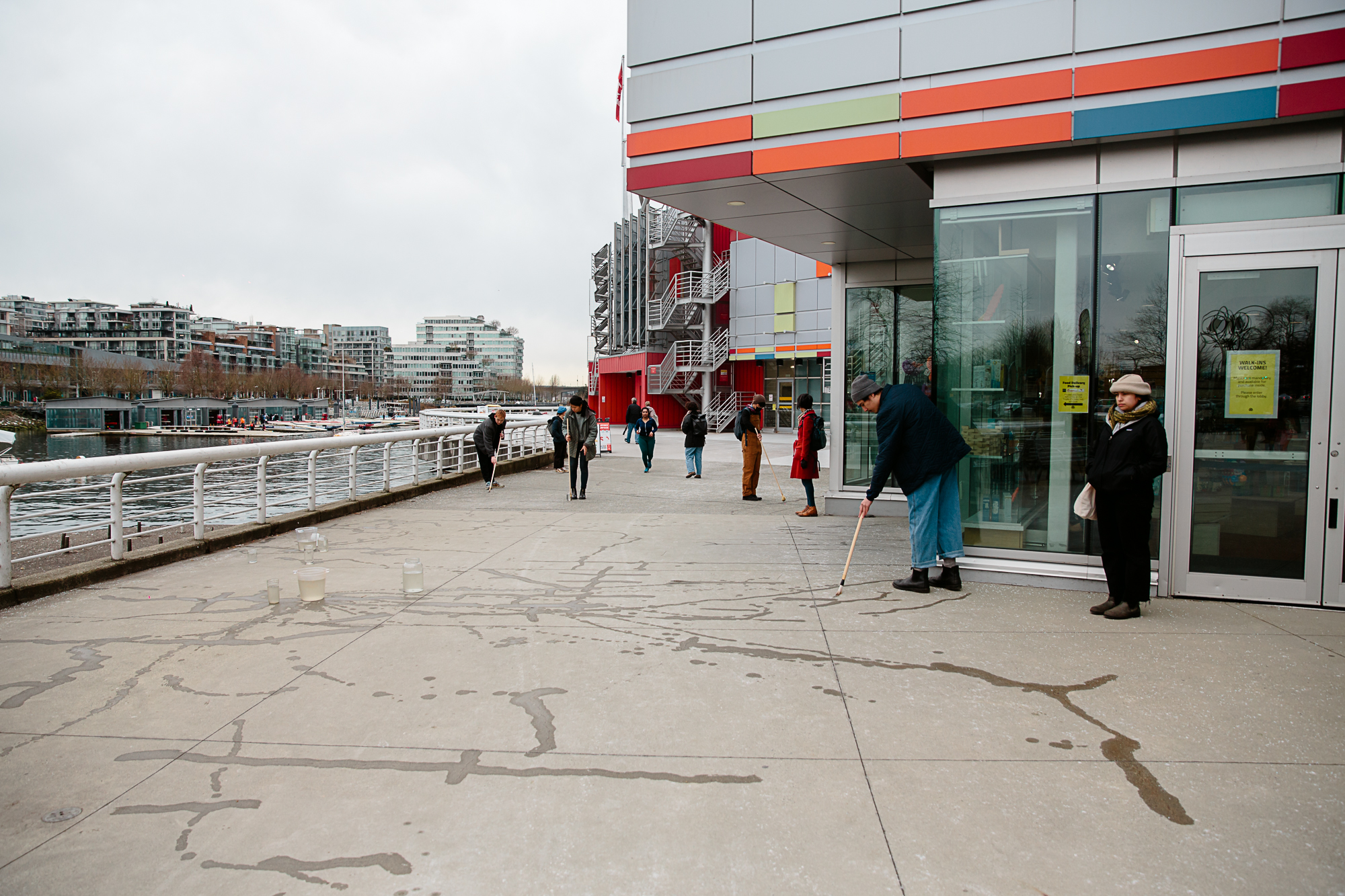
Image (top): Xinwei Che with participants during ‘Watering Cracks’ on February 26
Image (middle): A dog looks at the watering jars and receptacles during ‘Watering Cracks’
Image (bottom): Participants tracing False Creek cracks by Science World
All images courtesy Alison Boulier
Finally, Emily Carr’s Aboriginal Gathering Place hosted a sharing circle with three artists, educators and cultural keepers, Aaron Nelson-Moody/Splash (Tawx’sin Yexwulla), Meagan Innes and Jamie Thomas, to reflect on water and the land before it was filled in. Recollections of this circle, written by Pat Vera and Laura Kozak, can be accessed through the Aboriginal Gathering Place website.
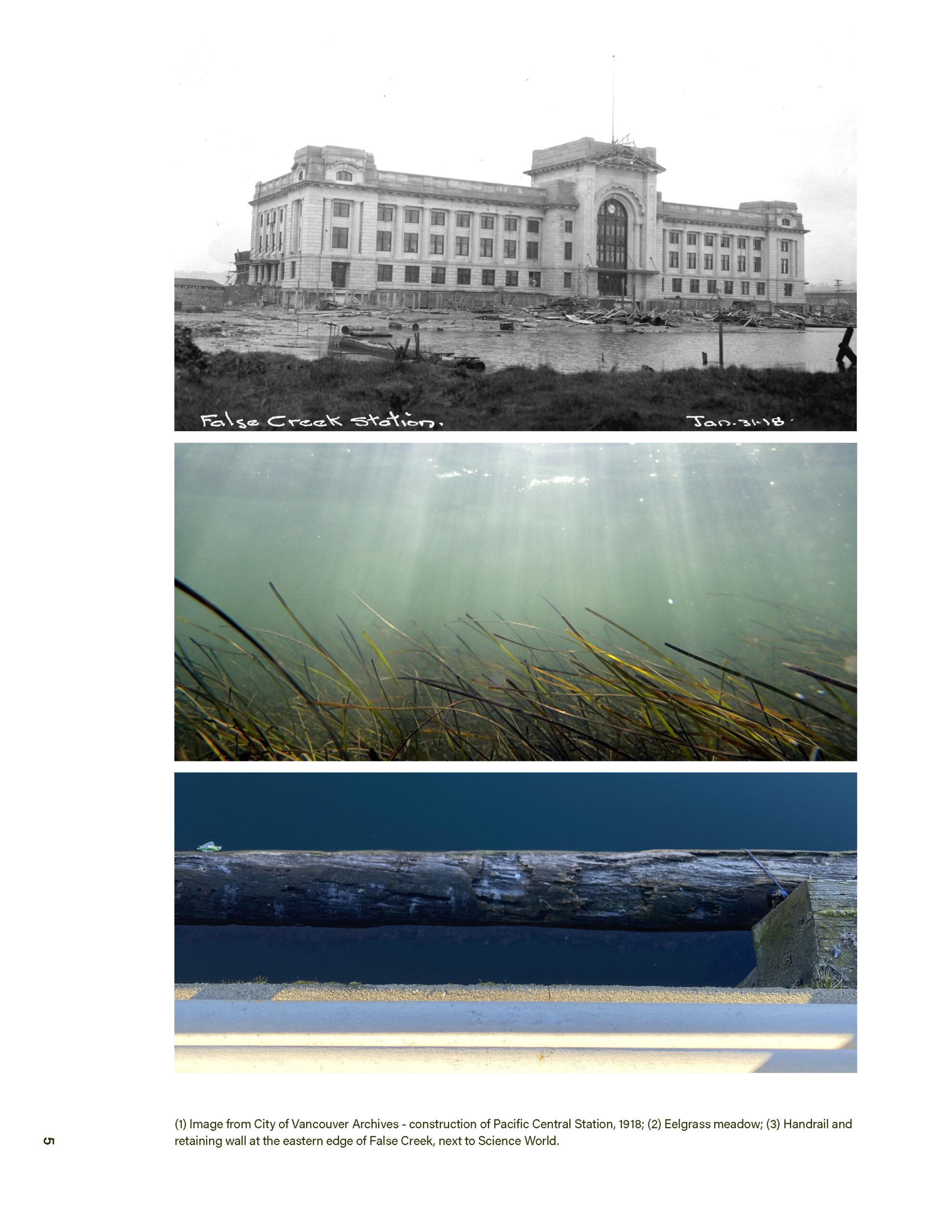
Image: A page from Laura Kozak’s reflection published on Aboriginal Gathering Place, featuring three images. Captions read (1) Image from City ofVancouver Archives – construction of Pacific Central Station, 1918 (2) Eelgrass meadow (3) Handrail and retaining wall at the eastern edge of False Creek, next to Science World.
Courtesy Laura Kozak and Aboriginal Gathering Place
A publication of work generated within Place-Based Field School is forthcoming in 2022 via Occasional Press.
‘Tide Change, False Creek’ workshops were supported by Place-Based Field School and the Audain Faculty of Art at Emily Carr University. Lou Sheppard’s research is supported by Translink and Iota Institute.
